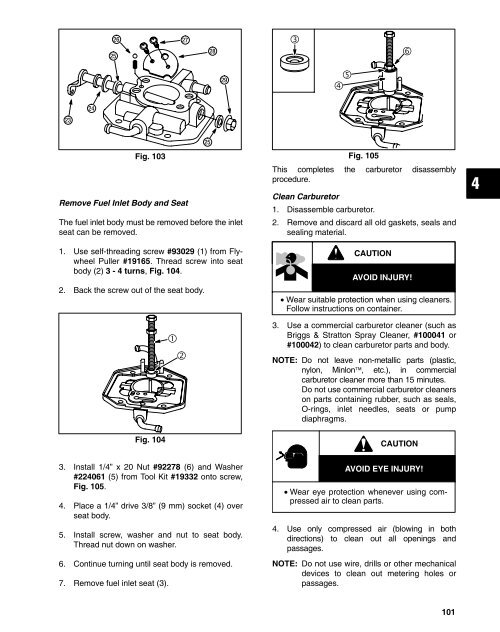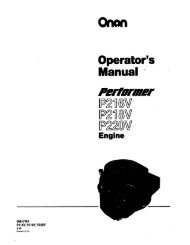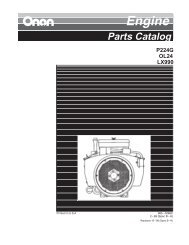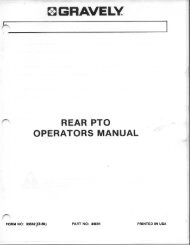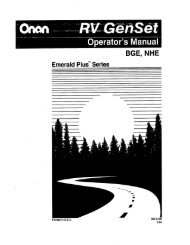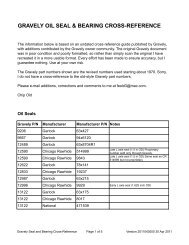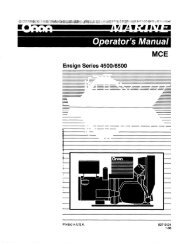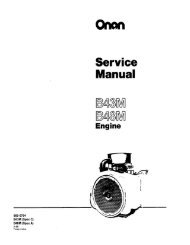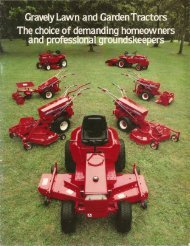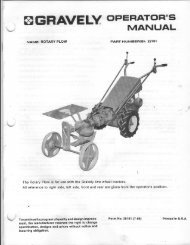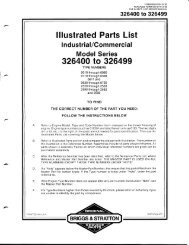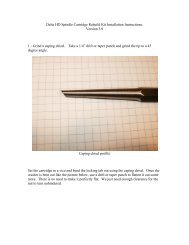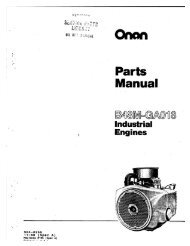272144 Vanguard Twin Cylinder OHV BRIGGS & STRATTON.pdf
272144 Vanguard Twin Cylinder OHV BRIGGS & STRATTON.pdf
272144 Vanguard Twin Cylinder OHV BRIGGS & STRATTON.pdf
Create successful ePaper yourself
Turn your PDF publications into a flip-book with our unique Google optimized e-Paper software.
ÒÒ<br />
ÒÒ<br />
<br />
<br />
<br />
<br />
<br />
<br />
<br />
<br />
<br />
ÒÒ<br />
<br />
<br />
Fig. 103<br />
<br />
Fig. 105<br />
This completes the carburetor disassembly<br />
procedure.<br />
Remove Fuel Inlet Body and Seat<br />
The fuel inlet body must be removed before the inlet<br />
seat can be removed.<br />
1. Use self-threading screw #93029 (1) from Flywheel<br />
Puller #19165. Thread screw into seat<br />
body (2) 3 - 4 turns, Fig. 104.<br />
2. Back the screw out of the seat body.<br />
ÒÒ <br />
<br />
Clean Carburetor<br />
1. Disassemble carburetor.<br />
2. Remove and discard all old gaskets, seals and<br />
sealing material.<br />
CAUTION<br />
AVOID INJURY!<br />
• Wear suitable protection when using cleaners.<br />
Follow instructions on container.<br />
3. Use a commercial carburetor cleaner (such as<br />
Briggs & Stratton Spray Cleaner, #100041 or<br />
#100042) to clean carburetor parts and body.<br />
NOTE: Do not leave non-metallic parts (plastic,<br />
nylon, Minlon, etc.), in commercial<br />
carburetor cleaner more than 15 minutes.<br />
Do not use commercial carburetor cleaners<br />
on parts containing rubber, such as seals,<br />
O-rings, inlet needles, seats or pump<br />
diaphragms.<br />
Fig. 104<br />
CAUTION<br />
3. Install 1/4” x 20 Nut #92278 (6) and Washer<br />
#224061 (5) from Tool Kit #19332 onto screw,<br />
Fig. 105.<br />
4. Place a 1/4” drive 3/8” (9 mm) socket (4) over<br />
seat body.<br />
5. Install screw, washer and nut to seat body.<br />
Thread nut down on washer.<br />
6. Continue turning until seat body is removed.<br />
7. Remove fuel inlet seat (3).<br />
AVOID EYE INJURY!<br />
• Wear eye protection whenever using compressed<br />
air to clean parts.<br />
4. Use only compressed air (blowing in both<br />
directions) to clean out all openings and<br />
passages.<br />
NOTE: Do not use wire, drills or other mechanical<br />
devices to clean out metering holes or<br />
passages.<br />
101


